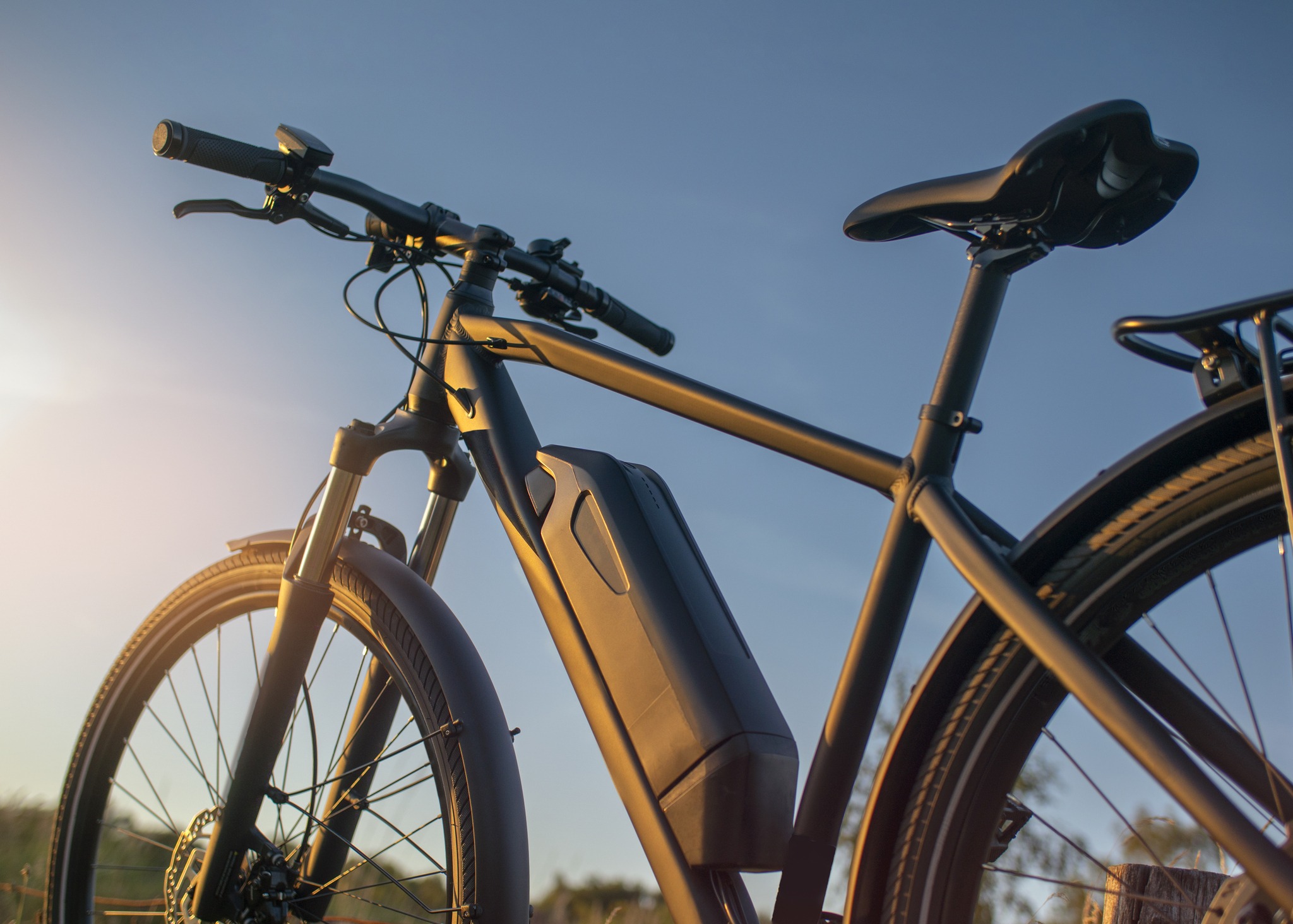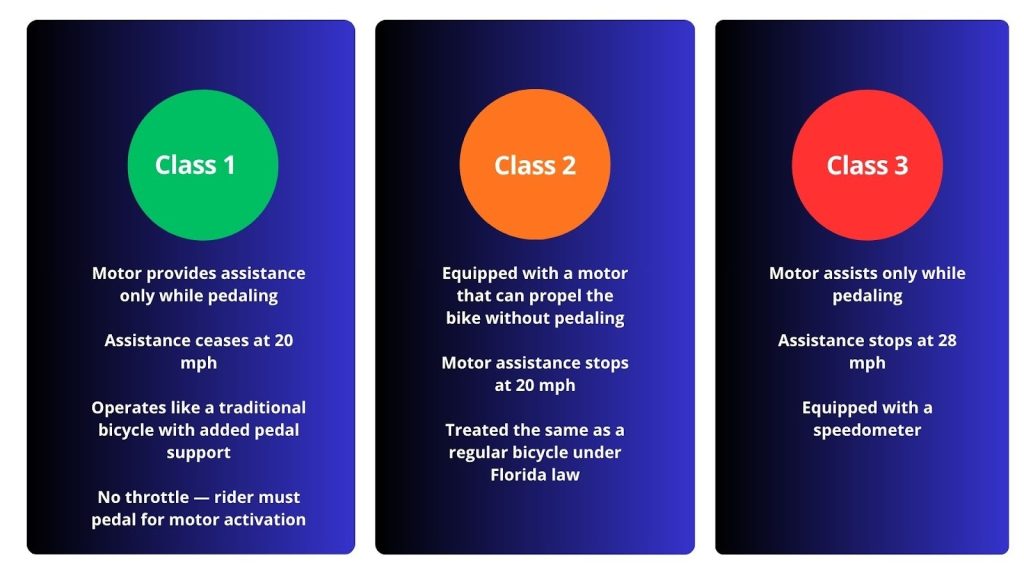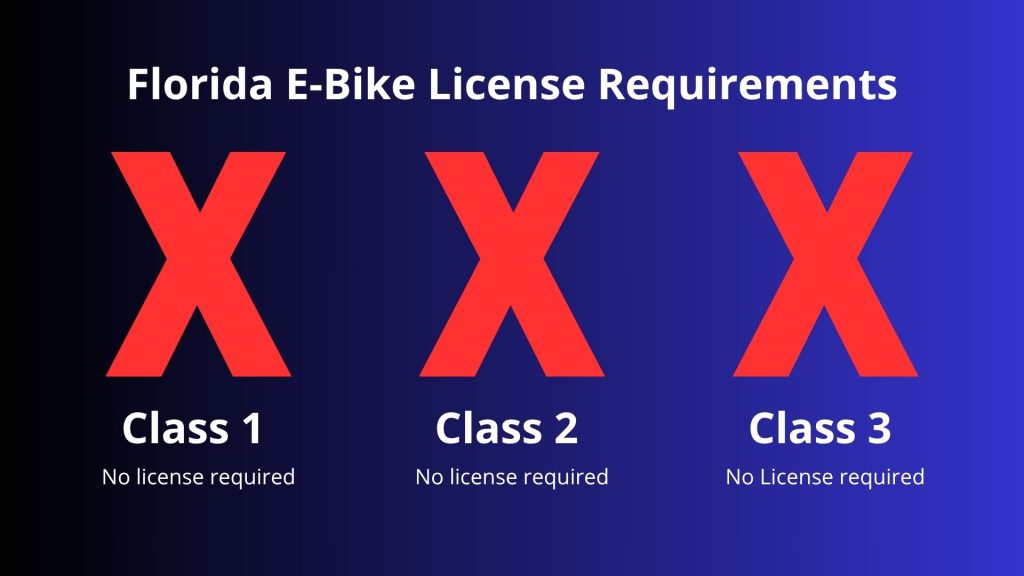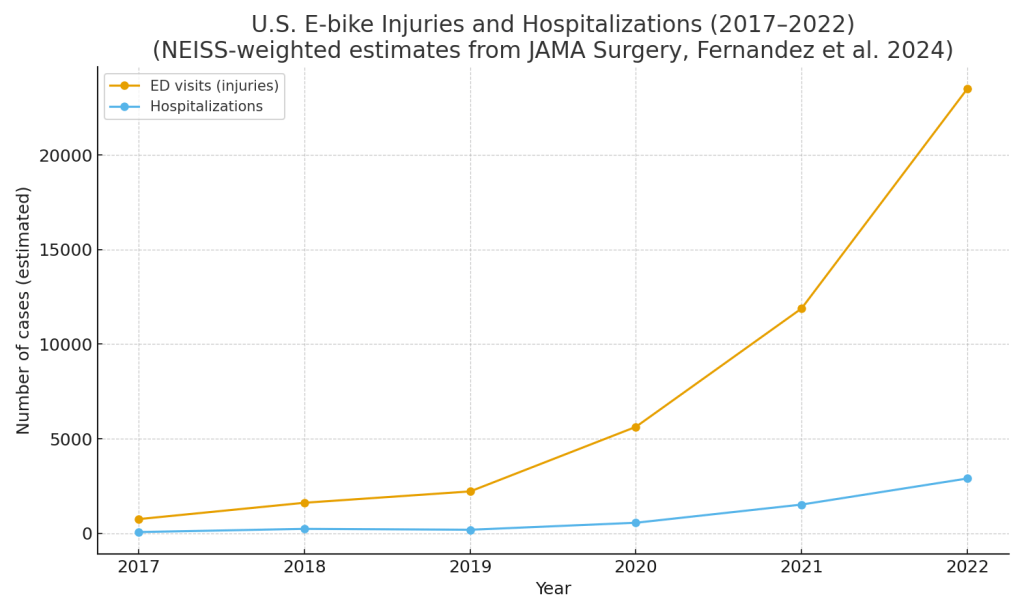
Once a novelty form of transportation and recreation, today, the popularity of electronic bikes has skyrocketed across the country. In the last five years, electric bikes have grown to become the primary source of revenue in the bicycle industry, making up more than 63% of bicycle purchases between 2019 and 2023. Furthermore, in 2024, the e-bike market in the United States was valued at more than $2.2 billion, with no signs of leveling off or slowing down.
Unfortunately, with the uptick in e-bike purchases and riders, the number of e-bike-related crashes, injuries, and fatalities has drastically risen alongside the number of sales. Here, we want to investigate the Florida laws surrounding e-bikes, the dangers associated with them, and how to stay safe as a rider.
What Is Considered An Electric Bike In Florida?

Although the legal definition can vary on a state-by-state basis, in Florida, a model legislation was designed to clearly define three distinct classes of electric bicycles and recognize them as bicycles under state law.
As defined in 316.003(23), Florida Statutes: A bicycle or tricycle equipped with fully operable pedals, a seat or saddle for the use of the rider, and an electric motor of less than 750 watts which meets the requirements of one of the following three classifications:
- Class 1 Electric Bicycle: Features a motor that assists only while pedaling and stops assisting once the bike reaches 20 mph.
- Class 2 Electric Bicycle: Includes a motor that can propel the bike without pedaling, but stops assisting once the bike reaches 20 mph.
- Class 3 Electric Bicycle: Has a motor that assists only while pedaling, ceases assistance at 28 mph, and is equipped with a speedometer.
Do You Need A License To Operate An E-Bike In Florida?

Let’s clear up a common question: Do you need a driver’s license to ride an electric bike in Florida? As of right now, a license is not needed to ride an e-bike. However, legislation in progress may change that.
- Class 1 Electric Bike: A driver’s license is not required.
- Class 2 Electric Bike: A driver’s license is not required.
- Class 3 Electric Bikes: A driver’s license is not required.
IMPORTANT NOTE – PROPOSED E-BIKE LEGISLATION: A NEW BILL (HB 243) WOULD MANDATE THAT ANYONE RIDING A CLASS 3 E-BIKE, WHICH PROVIDES PEDAL ASSISTANCE UP TO 28 MPH, MUST HAVE A VALID DRIVER’S LICENSE ON THEM.
Can Electric Bikes Be Considered Mopeds In Florida?
No. However, if your electric bike goes beyond Florida’s legal e-bike definition limits, it may no longer qualify as an e-bike and could be classified as a moped or even a motorcycle. This reclassification depends on factors such as motor power, speed capability, and design features.
Here’s how it breaks down:
- Motor: If the motor produces more than 750 watts, the bike may be considered a moped or motorcycle.
- Top Speed: If the motor can make the bike faster than 28 mph, it is no longer considered an e-bike.
- Throttle: If the bike can operate solely on the motor without pedaling at all speeds, it’s more likely to be classified as a moped.
Do Electric Bikes In Florida Require Registration Or License Plates?
In Florida, electric bicycles don’t need to be registered or display license plates. However, it’s a good idea to keep a record of your bike’s serial number and any other identifying details. This information can be extremely helpful if your e-bike is ever lost or stolen.
Do I Need Insurance?
No. Because electric bikes aren’t considered motor vehicles under Florida law, owners aren’t legally required to have insurance for them. Still, it’s a good idea to contact your insurance provider to see what coverage options are available, especially for liability or theft protection.
Are There Electric Bike Age Restrictions In Florida?
Yes. In the state of Florida, the age requirement for riding any class of e-bike is 16 years old.
What Are The Florida E-Bike Helmet Laws?
Helmets are required for all riders or passengers under the age of 16, although helmets are strongly encouraged for all riders of all ages riding all classes of e-bikes.
Where Can I Legally Ride My E-Bike?
- Public roads, streets, and shoulders: E-bikes are allowed anywhere traditional bicycles can be ridden.
- Bike lanes: Riders may use designated bike lanes just like regular cyclists.
- Multi-use and shared-use paths: E-bikes are permitted on these paths when local rules allow.
- Parks, trails, and beaches: Some parks and recreational areas have their own restrictions, especially for faster Class 3 e-bikes, so check posted signs before riding.
National E-Bike Accident Statistics

While e-bikes offer an efficient and eco-friendly way to travel, national data shows a significant rise in related injuries and hospitalizations over the past several years. Studies highlight not only the growing number of crashes but also the increasing severity of injuries sustained by riders. The following statistics paint a clearer picture of how e-bike safety has evolved nationwide:
- Between 2017 and 2022, there were nearly 50,000 reported e-bike-related injuries in the United States, with an estimated 6,000 resulting in hospitalization.
- The number of e-bike riders with head trauma seeking hospital care rose to nearly 8,000 in 2022.
- Micromobility-related injuries, including e-bikes, have trended upward since 2017, increasing an estimated average 23% annually.
- E-bike accident victims have a 17% risk of internal injury
- A (NEISS) study from 2013 to 2022 shows that 30% of injuries associated with e-biking had motor vehicle involvement.
- In urban areas, e-bike riders face a greater likelihood of collisions with vehicles or pedestrians. Rural riders, on the other hand, are more prone to high-speed crashes due to uneven terrain and fewer traffic controls.
- Wearing a helmet can reduce the risk of head injury by up to 60%. Despite this, helmet usage among e-bike riders remains relatively low in many regions, leaving many riders exposed to preventable trauma.
Tips For Preventing An E-Bike Accident
Being cautious while riding an electric bike is crucial for reducing the risk of accidents and injuries. Key safety measures for cyclists include:
- Wear a Helmet: Helmets dramatically reduce the risk of head injuries and traumatic brain injuries.
- Use Lights and Reflectors: Proper lighting and reflectors increase visibility to drivers, especially at night.
- Obey Traffic Laws: Cyclists should follow the same traffic laws as motor vehicles to ensure safe travel.
- Stay Alert: Being aware of your surroundings and anticipating driver behavior can help prevent accidents.
- Watch Your Speed: Reduce your speed in crowded areas, rough roads, in bad weather, and when navigating turns.
- Know Your E-Bike: Familiarize yourself with your e-bike’s handling and mechanics to avoid preventable accidents.
Steps To Take After An E-Bike Accident
If you are involved in an e-bike accident in Florida, taking the right steps can protect your health and legal rights:
- Get Medical Attention Immediately: Even minor injuries can worsen over time. Seek medical care as soon as possible.
- Document the Accident: Take photos of the crash scene, your injuries, and any damage to your e-bike or other property.
- Collect Information: Gather contact details from witnesses and the other party involved in the accident.
- Report the Incident: File a police report to create an official record of the accident.
- Consult Fort Lauderdale Lawyer: Speak with a skilled injury attorney in Fort Lauderdale who can guide you on your legal options and help protect your rights.